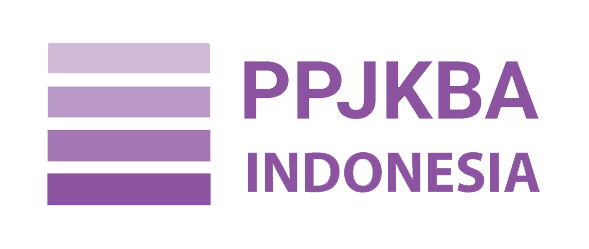Analysis of Phonological Errors in Reading Skills Arabic Text at School
DOI:
https://doi.org/10.35719/arkhas.v5i1.2202Keywords:
Phonological Error, Arabic Reading Skills, Non-Native LearnersAbstract
This research is based on the existence of problems related to the low ability of students to recite letters, words, or sentences in Arabic. This study attempts to analyze students' mistakes in reading skills in Arabic texts viewed in terms of phonology. This research is a type of qualitative research with a descriptive research design. The research method used is descriptive qualitative with data collection techniques through observation, interviews, and documentation. The research subjects were Arabic teachers and students of class XI Senior High School 2 Jember. The results of this study are as follows. First, phonological errors in Arabic text reading skills of class XI students in the Senior High School 2 Jember. such as consonant errors in throat groups and tongue groups; vocal errors such as vocal omission errors, vocal change errors, and short long vocal errors; diphthong error; double consonant error, and the fifth is the clothing assimilation error (ال) . Second, the factors that cause language errors in reading skills include linguistic factors and non linguistic factors. Non linguistic factors such as low interest and motivation in language, and lack of application of Arabic.
References
Adil, A., Liana, Y., Mayasari, R., Lamonge, A. S., & ... (2023). Metode Penelitian Kuantitatif dan Kualitatif: Teori dan Praktik. In Jakarta: Get Press …. researchgate.net. https://www.researchgate.net/profile/Moh-Rohman-3/publication/377329440_Metode_Penelitian_Kuantitatif_Dan_Kualitatif_Teori_Dan_Praktik_Get_Press_Indonesia/Links/65a0309740ce1c5902d51bc9/METODE-Penelitian-Kuantitatif-Dan-Kualitatif-Teori-Dan-Praktik-Get-Pr
Aini, E. M. N., & Khamidah, N. (2021). Analysis of Phonetic Errors in Sound Pronunciation for Eighth-Grade Students of Al-Manar Islamic High School, Prambon Nganjuk. Journal of Arabic Language Teaching, 1(1), 01–26. https://doi.org/10.35719/arkhas.v1i1.1279
Andini, M. E., Susiani, T. S., & Ngatman, N. (2023). The Application of Cooperative Learning (Talking Stick) with Multimedia to Improve Javanese Reading Skills to Fifth Grade Students of SD Negeri 1 Panjer in Academic Year of 2022/2023. In Kalam Cendekia: Jurnal Ilmiah Kependidikan (Vol. 11, Issue 2). Universitas Sebelas Maret. https://doi.org/10.20961/jkc.v11i2.73175
Anggito, A., & Setiawan, J. (2018). Metodologi penelitian kualitatif. CV Jejak (Jejak Publisher).
Ashari, M. Y., Huda, M. M., & ... (2023). Implementation Of Direct Reading Thinking Activity In Learning To Read In Arabic Lessons. Journal of Arabic …. https://jurnalpasca.uinkhas.ac.id/index.php/ARKHAS/article/view/1801
Bihari Dash, D. B. (2022). Significance of Globalisation and English Language. International Journal on Studies in English Language and Literature, 10(5), 10–16. https://doi.org/10.20431/2347-3134.1005002
Bradley, L., & Bryant, P. (2013). Phonological skills before and after learning to read. In Phonological processes in literacy (pp. 37–46). Routledge.
Busetto, L., Wick, W., & Gumbinger, C. (2020). How to use and assess qualitative research methods. In Neurological Research and practice. Springer. https://doi.org/10.1186/s42466-020-00059-z
De Jong, P. F., & Van der Leij, A. (1999). Specific contributions of phonological abilities to early reading acquisition: results from a Dutch latent variable longitudinal study. Journal of Educational Psychology, 91(3), 450.
Dewi, R. F., & Tlonaen, Z. A. (2017). The involvement of parents role and habitus toward children literacy. The 1st International Conference on Language, Literature and Teaching. ICoLLiT, 137–145.
Ehri, L. C. (2020). The Science of Learning to Read Words: A Case for Systematic Phonics Instruction. Reading Research Quarterly, 55(S1), S45–S60. https://doi.org/10.1002/rrq.334
Ernštreits, V. (2020). Livonian place names: Documentation, research, problems, and opportunities. Eesti Ja Soome-Ugri Keeleteaduse Ajakiri, 11(1), 213–233. https://doi.org/10.12697/JEFUL.2020.11.1.09
Fahrurrozi, A. (2014). Pembelajaran bahasa arab: Problematika dan solusinya. Arabiyat: Jurnal Pendidikan Bahasa Arab Dan Kebahasaaraban, 1(2), 161–180.
Fuad, A. (2016). Metodologi pengajaran bahasa arab.
Gugliotta, E., & Dinarelli, M. (2020). TArC: Incrementally and semi-automatically collecting a tunisian arabish corpus. In C. N., B. F., B. P., C. K., C. C., D. T., G. S., I. H., M. B., M. J., M. H., M. A., O. J., & P. S. (Eds.), LREC 2020 - 12th International Conference on Language Resources and Evaluation, Conference Proceedings (pp. 6279–6286). European Language Resources Association (ELRA). https://www.scopus.com/inward/record.uri?eid=2-s2.0-85096598780&partnerID=40&md5=ffe6a0cf2bcdf25c68bc93a83ad8c383
Irawati, R. P. (2013). Mengenal Sejarah Sastra Arab. Ega Cipta: Semarang.
Isozaki, A. (2014). Flowing toward solutions: literature listening and L2 literacy. The Journal of Literature in Language Teaching, 3(2), 6–20.
Jailani, M. S. (2023). Teknik pengumpulan data dan instrumen penelitian ilmiah pendidikan pada pendekatan kualitatif dan kuantitatif. IHSAN: Jurnal Pendidikan Islam, 1(2), 1–9.
Jauharoh, E., Anam, W., & Huda, M. M. (2021). The Use of Expressions in Improving Kalam Skill in Learning Arabic for MTSN 2 Kediri Students. Asalibuna. https://jurnalfaktarbiyah.iainkediri.ac.id/index.php/asalibuna/article/view/586
Kemmerer, D. (2023). Grounded Cognition Entails Linguistic Relativity: Response to Commentators. Topics in Cognitive Science, 15(4), 698–708. https://doi.org/10.1111/tops.12687
Kudus, R. (2025). Application of the Shoutiyyah Method in Addressing Pronunciation Errors of Arabic Language Education Students at Universitas Negeri Makassar. Borneo Journal of Language and Education, 5(1), 121–139.
Lathifah, F., Syihabuddin, S., & Al Farisi, M. Z. (2017). Analisis Kesalahan Fonologis Dalam Keterampilan Membaca Teks Bahasa Arab. Arabiyat: Jurnal Pendidikan Bahasa Arab Dan Kebahasaaraban, 4(2), 174–184.
Liberman, I. Y., & Shankweiler, D. (1985). Phonology and the problems of learning to read and write. Remedial and Special Education, 6(6), 8–17.
Mahbubah, L., & Ilmiyah, T. (2024). Analisis Kesalahan Fonologi dalam Maharah Qira’ah Siswa Madrasah Ibtidaiyah. In Bidayatuna Jurnal Pendidikan Guru Mandrasah Ibtidaiyah (Vol. 7, Issue 1, pp. 37–50). Institut Agama Islam Syarifuddin Lumajang. https://doi.org/10.54471/bidayatuna.v7i1.2945
McFayden, T. C., Faust, M. E., McIntosh, A., & Multhaup, K. S. (2023). Effect of visual presentation format and recall direction on letter span and error patterns in Deaf signing and hearing adults. Attention, Perception, and Psychophysics, 85(5), 1631–1648. https://doi.org/10.3758/s13414-023-02664-x
Morais, J., Bertelson, P., Cary, L., & Alegria, J. (1986). Literacy training and speech segmentation. Cognition, 24(1–2), 45–64.
Müller, K., & Brady, S. (2001). Correlates of early reading performance in a transparent orthography. Reading and Writing, 14, 757–799.
Nuswowati, M. (2022). Research Method for Chemistry Education. wawasan Ilmu.
Pahleviannur, M. R. (2022). Paradigma Penelitian Kualitatif. Metodologi Penelitian Kualitatif, 1–18. https://www.scopus.com/inward/record.uri?eid=2-s2.0-85215867493&partnerID=40&md5=36e5aa8401642deaa43bd170fb425392
Pamungkas, M. I., Satibi, D. A., Zakhratunnisa, A., & Lestari, A. (2024). Error Analysis of Consonant Pronunciation in Arabic Language among Fifth-Grade Students. Ta’lim Al-’Arabiyyah: Jurnal Pendidikan Bahasa Arab & Kebahasaaraban, 8(1), 56–71.
Patiung, D. (2016). Membaca sebagai sumber pengembangan intelektual. Al Daulah: Jurnal Hukum Pidana Dan Ketatanegaraan, 5(2), 352–376.
Purwanza, S. W. (2022). Metodologi penelitian kuantitatif, kualitatif dan kombinasi. books.google.com. https://books.google.com/books?hl=en&lr=&id=0CjKEAAAQBAJ&oi=fnd&pg=PA1&dq=metode+penelitian+pendidikan+pendekatan+kuantitatif+kualitatif+dan+r+d&ots=Fyi7bmFifn&sig=D_thwRhnIB7O7pMCWRHhurZzPf4
Ramscar, M. (2021). How children learn to communicate discriminatively. Journal of Child Language, 48(5), 984–1022. https://doi.org/10.1017/S0305000921000544
Rosikh, F., Rohman, M. F., Finurika, I., & Nisa’, K. (2023). Tarqiyah Maharat al-Qarn al-Hadi wa al-‘Isyrin fi Ta’lim Maharah al-Kalam ‘ala Asas al-Ta’lim al-Bina’i fi al-Jami’ah. In Arabiyatuna: Jurnal Bahasa Arab (Vol. 7, Issue 2, p. 479). STAIN Curup. https://doi.org/10.29240/jba.v7i2.8072
Sadeghi, N., & Smith, T. (2024). Ethics in qualitative research. In How to Conduct Qualitative Research in Finance (pp. 108–132). Edward Elgar Publishing Ltd. https://doi.org/10.4337/9781803927008.00015
Sargiani, R. D. A., Ehri, L. C., & Maluf, M. R. (2022). Teaching Beginners to Decode Consonant–Vowel Syllables Using Grapheme–Phoneme Subunits Facilitates Reading and Spelling as Compared With Teaching Whole-Syllable Decoding. Reading Research Quarterly, 57(2), 629–648. https://doi.org/10.1002/rrq.432
Sekarsari, A., Aullia, A. E. P., Kaltsum, N., Saragih, R. H., & Dongoran, R. (2024). Arabic Phonological Interference: Contrastive Analysis of Arabic Phonemes Against Indonesian Phonemes in Non-Arabic Literature Department Students of Al-Azhar University. Aslama: Journal of Islamic Studies, 1(4), 155–165.
Smirnov, A. V. (2023). A priori in Language and Linguistics: Word and Its Basic Unit. Voprosy Filosofii, 2023(9), 167–180. https://doi.org/10.21146/0042-8744-2023-9-167-180
Suhardi, R. F., & Abdillah, A. (2024). Phonological Errors In Arabic Speech Practice Among Islamic Boarding School Students. Proceeding International Conference on Islam and Education (ICONIE), 3(1), 2602–2617.
Susanto, S., & Nanda, D. S. (2024). Harmonizing sound and script: Integrating phonetic symbols within the lexical approach to improve EFL listening skill. English Review: Journal of English Education, 12(1), 177–192.
Ting, K. S., Talib, O., Ayub, A. F. M., Zolkepli, M., Yee, C. C., & Hoong, T. C. (2024). Rasch model assessment of algebraic word problem among year 8 Malaysian students. International Journal of Evaluation and Research in Education , 13(2), 1088–1099. https://doi.org/10.11591/ijere.v13i2.25721
Treiman, R. (1991). Phonological awareness and its roles in learning to read and spell. In Phonological awareness in reading: The evolution of current perspectives (pp. 159–189). Springer.
Utari, R. F., May, A., & Hikmah, H. (2024). Pengembangan Metode Role Play Untuk Meningkatkan Kemampuan Berbicara Pada Mata Pelajaran Bahasa Arab. In INTIFA: Journal of Education and Language (Vol. 1, Issue 2). CV. Minhaj Pustaka. https://doi.org/10.62083/63p2qp28
Vloedgraven, J., & Verhoeven, L. (2009). The nature of phonological awareness throughout the elementary grades: An item response theory perspective. Learning and Individual Differences, 19(2), 161–169.
Wagner, R., Balthazor, M., Hurley, S., Morgan, S., Rashotte, C., Shaner, R., Simmons, K., & Stage, S. (1987). The nature of prereaders’ phonological processing abilities. Cognitive Development, 2(4), 355–373.
Wardana, I. K. (2014). Kesalahan Artikulasi Phonemes Bahasa Inggris Mahasiswa Prodi Bahasa Inggris Unmas Denpasar; Sebuah Kajian Fonologi Generatif. Jurnal Bakti Saraswati (JBS), 3(02).
Wise, J. C., Pae, H. K., Wolfe, C. B., Sevcik, R. A., Morris, R. D., Lovett, M., & Wolf, M. (2008). Phonological awareness and rapid naming skills of children with reading disabilities and children with reading disabilities who are at risk for mathematics difficulties. Learning Disabilities Research & Practice, 23(3), 125–136.
Wulandari, N. (2020). Analisis kesalahan fonologis dalam keterampilan berbicara bahasa Arab. Al-Fathin: Jurnal Bahasa Dan Sastra Arab, 3(01), 71–84.
Yaş, E. (2021). The pronunciation of English acronyms in Turkish. Journal of Language and Linguistic Studies, 17(3), 171–175. https://doi.org/10.52462/jlls.82
Zulfa, D. R. (2022). Analisis Kesalahan Fonologi Dalam Keterampilan Membaca Teks Bahasa Arab Siswa Kelas V MI Baiquniyyah. Mahira: Journal of Arabic Studies & Teaching, 1(2), 127–136.
Downloads
Published
How to Cite
Issue
Section
License
Copyright (c) 2025 Bayu Wahyu Maulana, M. Rizqi Zainal Islam, Hamza Shoubaki

This work is licensed under a Creative Commons Attribution 4.0 International License.












